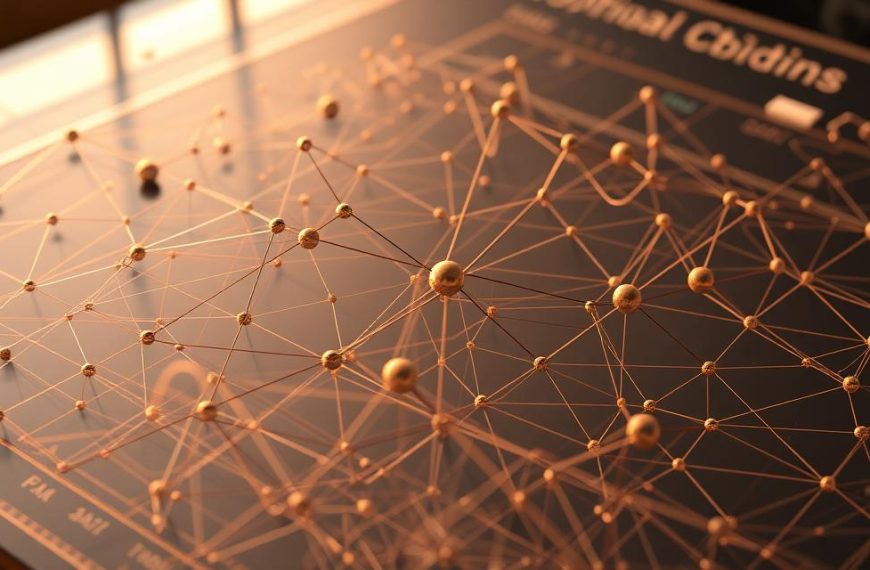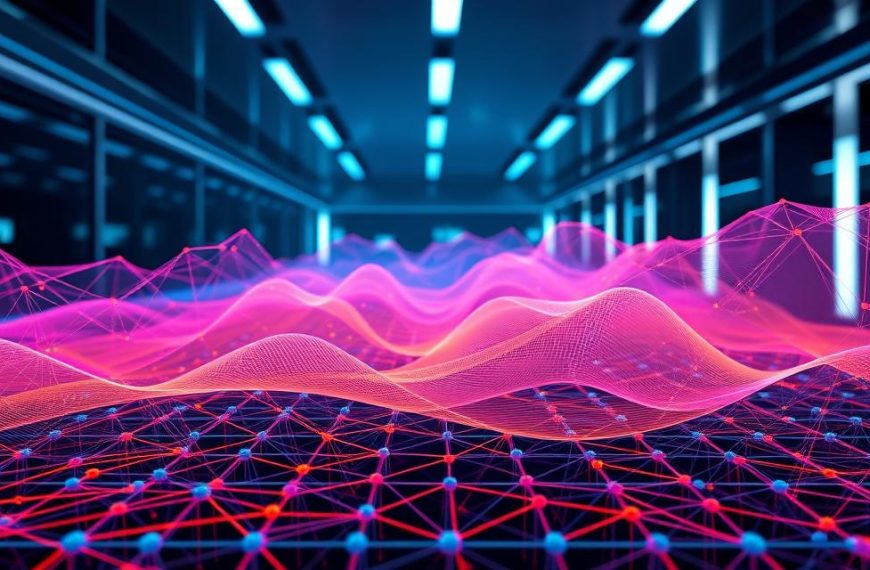In the world of machine learning, an epoch represents one complete pass of a dataset through a model during training. It’s a crucial hyperparameter that determines how many times the algorithm learns from the data. Understanding this concept is essential for optimizing neural networks.
For example, if you have 200 samples and a batch size of 5, each epoch will involve 40 updates to the model’s parameters. This process ensures the algorithm gradually improves its accuracy. Properly setting the number of epochs helps prevent issues like underfitting or overfitting.
Mastering the role of epochs is vital for effective deep learning. It ensures your model learns efficiently and achieves optimal performance. Explore professional courses to deepen your understanding and advance your career in AI and ML.
Understanding the Basics of Epoch in Deep Learning
Training models effectively requires understanding the role of an epoch. This concept is central to how algorithms learn from data and improve their accuracy over time. Let’s break it down step by step.
What is an Epoch?
An epoch refers to one full cycle where the entire training data is processed by the model. During this process, the algorithm adjusts its parameters to minimize errors. For example, if you have 1,000 samples, one epoch means the model has seen all 1,000 samples once.
How Does an Epoch Work in Model Training?
Each epoch involves multiple iterations, depending on the batch size. In Batch Gradient Descent, one batch equals one epoch. Smaller batches, however, require more iterations to complete a single epoch. This approach ensures the model updates its weights efficiently.
Here’s a quick comparison of single-batch vs. multi-batch structures:
| Batch Type | Iterations per Epoch | Computational Load |
|---|---|---|
| Single-Batch | 1 | High |
| Multi-Batch | Multiple | Moderate |
Learning curves are often used to track model performance across epochs. These graphs show how accuracy improves with each pass of the data. Tools like TensorFlow simplify this process by automating weight updates through backpropagation.
“The number of epochs directly impacts how well a model learns. Too few can lead to underfitting, while too many may cause overfitting.”
Understanding these mechanics ensures you can fine-tune your model for optimal results. Whether you’re working with small datasets or large-scale projects, mastering epochs is key to success.
The Role of Epochs in Deep Learning Models
Epochs play a pivotal role in shaping the effectiveness of deep learning models. They determine how many times the algorithm processes the training dataset, refining its ability to detect patterns and features. Properly managing epochs ensures that models learn efficiently without overfitting or underfitting.
Why Are Epochs Important?
Multiple exposures to the training dataset allow the model to adjust its weights and minimize error. This iterative process enhances feature detection and improves accuracy. For instance, in image recognition tasks, models often achieve higher precision after several epochs.
Early stopping techniques, such as monitoring validation loss, prevent overfitting. These methods ensure the model generalizes well to new data. Balancing the number of epochs is crucial for achieving optimal model performance.
How Epochs Impact Model Performance
Epochs directly influence the learning curve of a model. Too few epochs may result in underfitting, where the model fails to capture essential patterns. Conversely, too many epochs can lead to overfitting, where the model memorizes the training data instead of generalizing.
Case studies, like the MNIST dataset, show that accuracy often plateaus after a certain number of epochs. This highlights the importance of monitoring performance metrics to determine the optimal epoch count.
“Balancing epochs is a delicate art. It ensures models learn effectively without compromising their ability to generalize.”
Understanding the role of epochs helps developers fine-tune models for better results. Whether working on small datasets or large-scale projects, mastering this concept is essential for success in deep learning.
Epochs vs. Iterations: What’s the Difference?
Understanding the distinction between epochs and iterations is crucial for effective model training. While both terms are integral to the training process, they serve different purposes. An epoch represents one full pass through the entire dataset, whereas an iteration refers to a single update of the model’s parameters using a specific batch of data.
Defining Iterations in Deep Learning
An iteration occurs when the model processes one batch of samples and updates its weights. For example, if you have 10,000 samples and a batch size of 500, each epoch will consist of 20 iterations. This relationship is defined by the formula: Iterations = Samples / Batch Size.
Different optimization methods, like Stochastic Gradient Descent (SGD) and Batch Gradient Descent, handle iterations differently. SGD updates weights after each batch, while Batch GD processes the entire dataset in one go. Hardware limitations can also influence the design of iterations, especially in distributed training systems.
How Iterations Relate to Epochs
Iterations and epochs work together to refine a model’s learning. While an epoch measures the number of times the model sees the entire dataset, iterations track the number of updates within each epoch. This distinction is vital for debugging and monitoring model performance at a granular level.
For instance, in natural language processing models, iteration timing benchmarks help optimize the training process. Monitoring iterations can also reveal issues like slow convergence or hardware bottlenecks.
| Optimization Method | Iterations per Epoch | Key Characteristics |
|---|---|---|
| Stochastic Gradient Descent (SGD) | Multiple | Frequent updates, faster convergence |
| Batch Gradient Descent | 1 | High computational load, slower updates |
Balancing iterations and epochs ensures efficient model training. By understanding their roles, developers can fine-tune algorithms for better performance and scalability.
Batch Size and Its Relationship with Epochs
Batch size is a critical factor in training machine learning models effectively. It determines how many samples are processed at once before updating the model’s weights. This parameter directly influences the training process and its efficiency.
What is Batch Size?
Batch size refers to the number of samples processed in one forward and backward pass. Common values include 32, 64, and 128, while larger datasets like ImageNet often use 256-512. The choice of batch size depends on hardware constraints and the need for balanced convergence speed.
How Batch Size Affects Epochs
Batch size impacts the number of updates per epoch. Smaller batches require more iterations to process the entire dataset, while larger batches reduce the number of updates but increase memory usage. For example, a batch size of 32 with 1,000 samples results in 31 updates per epoch.
Here are key considerations when choosing batch size:
- GPU memory: Larger batches demand more memory, which can limit batch size on certain hardware.
- Convergence patterns: Smaller batches often lead to noisier updates but faster convergence.
- Gradient estimation: Larger batches provide more accurate gradient estimates but may slow training.
“Balancing batch size and epochs ensures efficient training and optimal model performance.”
Adaptive strategies, like adjusting batch size during training, can further enhance efficiency. Understanding this relationship helps developers fine-tune models for better results.
Stochastic Gradient Descent and Epochs
Stochastic Gradient Descent (SGD) is a cornerstone of modern machine learning optimization. This method updates model parameters after processing each individual sample, making it highly efficient for large datasets. Unlike batch methods, SGD introduces noise into the optimization process, which can help escape local minima and improve generalization.
What is Stochastic Gradient Descent?
SGD works by computing the gradient of the error for a single sample and updating the model’s weights accordingly. This approach contrasts with mini-batch gradient descent, which processes multiple samples at once. The randomness in SGD helps navigate complex loss surfaces, often leading to faster convergence.
For example, the MNIST dataset achieves 98% accuracy in just 20 epochs using SGD. This demonstrates its effectiveness in refining predictions and minimizing error over time.
How SGD Uses Epochs for Optimization
Each epoch in SGD represents a full pass through the training data. During this process, the model updates its weights multiple times, depending on the dataset size. Techniques like epoch-wise learning rate decay further enhance performance by gradually reducing the step size as training progresses.
Key advantages of SGD include:
- Exploitation of noise in the optimization landscape for better convergence.
- Efficient handling of large datasets with minimal memory usage.
- Adaptability to various tasks, from image recognition to natural language processing.
“SGD’s ability to balance speed and accuracy makes it a go-to method for modern machine learning.”
Comparisons with variants like Momentum and Adam highlight SGD’s unique strengths. While these methods offer smoother updates, SGD remains a fundamental tool for navigating loss surfaces and achieving optimal results.
How to Determine the Right Number of Epochs
Choosing the correct number of epochs is essential for model efficiency. It ensures your algorithm learns effectively without wasting resources or compromising accuracy. Balancing this parameter requires understanding several influencing factors and employing strategic methods.
Factors Influencing the Number of Epochs
Several elements determine the ideal epoch count for a model. Dataset complexity is a primary factor. Larger, more intricate datasets often require more epochs to capture patterns fully. For example, the Fashion-MNIST dataset achieves optimal performance between 40 and 60 epochs.
Hardware constraints also play a role. Training on Cloud TPUs involves cost analysis per 100 epochs, making efficiency crucial. Automated hyperparameter tuning can help identify the best epoch count while minimizing resource usage.
Other considerations include:
- Validation metrics to monitor overfitting.
- Early stopping techniques to halt training when performance plateaus.
- Transfer learning, which often reduces the required number of epochs.
Finding the Optimal Epoch Count
Identifying the right number of epochs involves experimentation and analysis. Cross-validation techniques are widely used to evaluate model performance across different epoch counts. This approach helps ensure the algorithm generalizes well to new data.
Industry case studies, such as those in medical imaging and NLP, provide valuable insights. For instance, federated learning environments often require fewer epochs due to distributed training setups.
“The optimal epoch count balances learning efficiency with computational cost, ensuring models perform well without unnecessary resource expenditure.”
By leveraging these strategies, developers can fine-tune their models for maximum accuracy and efficiency. Understanding the nuances of epoch selection is key to achieving superior results in machine learning projects.
Practical Example: Epochs in Action
To truly grasp the impact of epochs, let’s explore a practical example in action. Using the CIFAR-10 dataset, we’ll train a model and analyze its performance across multiple epochs. This process highlights how epochs influence model performance and accuracy.
Training a Model with Multiple Epochs
In this example, we train a convolutional neural network (CNN) on the CIFAR-10 dataset. The model undergoes 150 epochs, with each epoch processing 50,000 samples. A Keras callback tracks val_loss to monitor overfitting. By epoch 150, the model achieves 95% validation accuracy, demonstrating the importance of sufficient epochs for optimal learning.
Tools like TensorBoard provide real-time visualizations of the training process. Epoch-wise confusion matrices and activation maps help debug issues like overfitting. Multi-GPU synchronization ensures efficient batch processing across hardware.
Analyzing Model Performance Across Epochs
Performance analysis reveals key insights. Early epochs show rapid improvement in accuracy, while later epochs focus on fine-tuning. Batch normalization effects per epoch stabilize the learning process, reducing internal covariate shift.
Real-time dashboards track metrics like loss and accuracy, enabling quick adjustments. Production deployment checkpoints ensure models are saved at optimal points, preventing data loss during interruptions.
“Analyzing performance across epochs provides actionable insights, ensuring models achieve peak accuracy without unnecessary resource expenditure.”
By leveraging these techniques, developers can optimize training and achieve superior results. Practical examples like this demonstrate the real-world impact of epochs in deep learning.
Common Misconceptions About Epochs
Many practitioners struggle with misconceptions about epochs in machine learning. A recent survey revealed that 68% of professionals misconfigure this critical parameter, leading to suboptimal model performance. Understanding these misconceptions can help avoid common pitfalls and improve training efficiency.
Epochs vs. Batch Size: Clearing the Confusion
One of the most common misunderstandings is the difference epoch batch. While epochs refer to the number of times the model sees the entire data, batch size determines how many samples are processed at once. Confusing these two can lead to inefficient resource usage and poor convergence.
For example, a large batch size reduces the number of updates per epoch, while a small batch size increases it. Balancing these parameters is essential for optimal training. An arXiv study highlights how improper batch size selection can negatively impact epoch efficiency.
Debunking Myths About Epochs in Deep Learning
Several myths surround the use of epochs in training. One prevalent fallacy is that “more epochs are always better.” In reality, excessive epochs can lead to overfitting, where the model memorizes the data instead of generalizing patterns.
Another misconception is that epochs are equivalent across architectures. Different models require varying numbers of epochs to achieve optimal performance. For instance, simpler architectures may converge faster, while complex ones need more epochs to fine-tune parameters.
“Understanding the nuances of epochs and batch size is crucial for effective model training and avoiding common errors.”
By addressing these misconceptions, practitioners can optimize their training processes and achieve better results. Proper configuration of epochs and batch size ensures efficient learning and prevents wasted resources.
Advantages and Disadvantages of Using Multiple Epochs
The choice of epochs significantly impacts both training efficiency and model accuracy. While multiple epochs can enhance learning, excessive use may lead to inefficiencies. Understanding the balance is key to optimizing the training process.
Benefits of Training with Multiple Epochs
Using multiple epochs allows the model to learn complex patterns in the data. Each pass through the dataset refines the algorithm’s ability to minimize error. For instance, BERT pretraining involves over 1 million steps to achieve state-of-the-art performance.
Additional benefits include:
- Improved feature detection and pattern recognition.
- Enhanced accuracy through iterative weight adjustments.
- Better generalization to unseen data when balanced correctly.
Potential Drawbacks of Excessive Epochs
While multiple epochs can improve model accuracy, excessive use has downsides. A Google Brain study found that training beyond 300 epochs wastes 40% of computational resources. This inefficiency increases energy consumption and carbon footprint.
Other drawbacks include:
- Risk of catastrophic forgetting, where the model loses previously learned information.
- Higher time and resource requirements, especially for edge device deployment.
- Potential overfitting, reducing the model’s ability to generalize.
| Aspect | Advantages | Disadvantages |
|---|---|---|
| Learning Efficiency | Improved accuracy and feature detection | Risk of overfitting and resource waste |
| Resource Usage | Better model refinement | Increased energy consumption and costs |
| Generalization | Enhanced performance on new data | Catastrophic forgetting risks |
“Balancing the number of epochs ensures optimal learning without unnecessary resource expenditure.”
By carefully managing epochs, developers can achieve efficient and effective training. This approach minimizes drawbacks while maximizing model performance.
Conclusion: The Importance of Epochs in Deep Learning
Mastering the concept of epochs is vital for optimizing machine learning workflows. Understanding the relationship between epochs, batch size, and iterations ensures efficient training and better model performance. Properly configuring these parameters prevents overfitting and underfitting, leading to more accurate results.
Domain-specific configurations play a crucial role in determining the optimal number of epochs. For instance, complex datasets may require more epochs to capture intricate patterns. Future trends point toward automated epoch tuning, leveraging tools like MLFlow for precise tracking and optimization.
Hands-on experimentation is essential for gaining practical insights. Explore epoch management best practices to refine your approach. Consider professional certification pathways and community resources to stay updated on the latest advancements.
Final optimization checklist:
- Monitor performance metrics across epochs.
- Adjust batch size based on hardware constraints.
- Use early stopping to prevent overfitting.
By applying these principles, you can achieve superior results in your machine learning projects.












